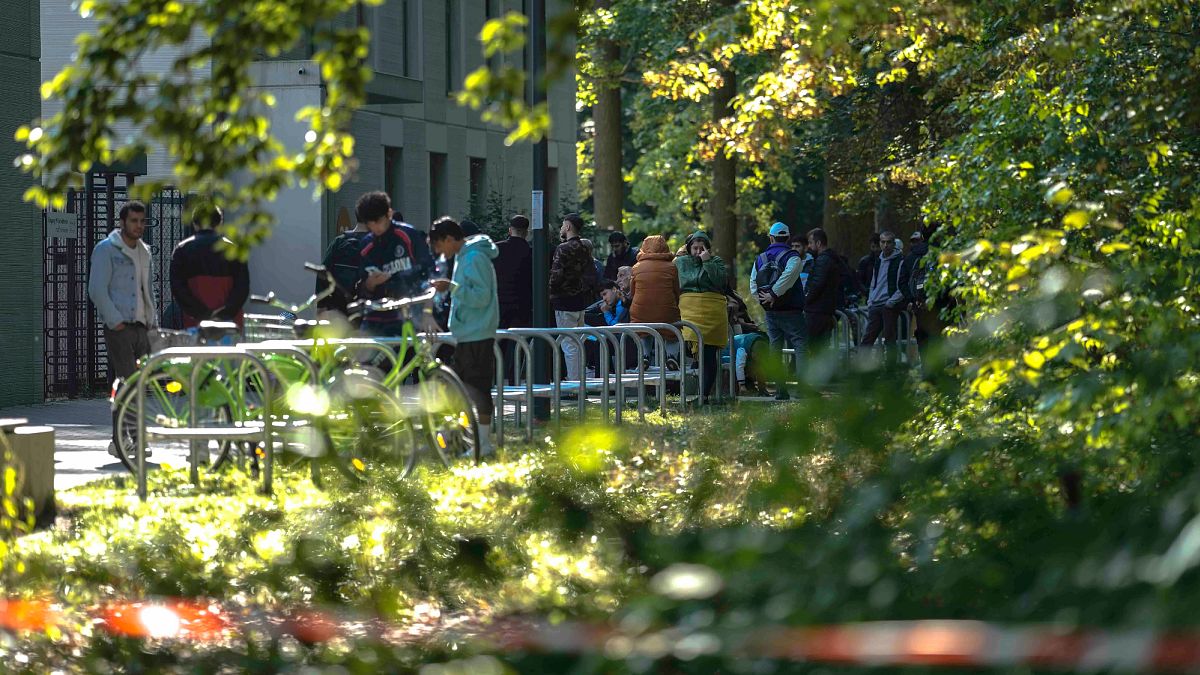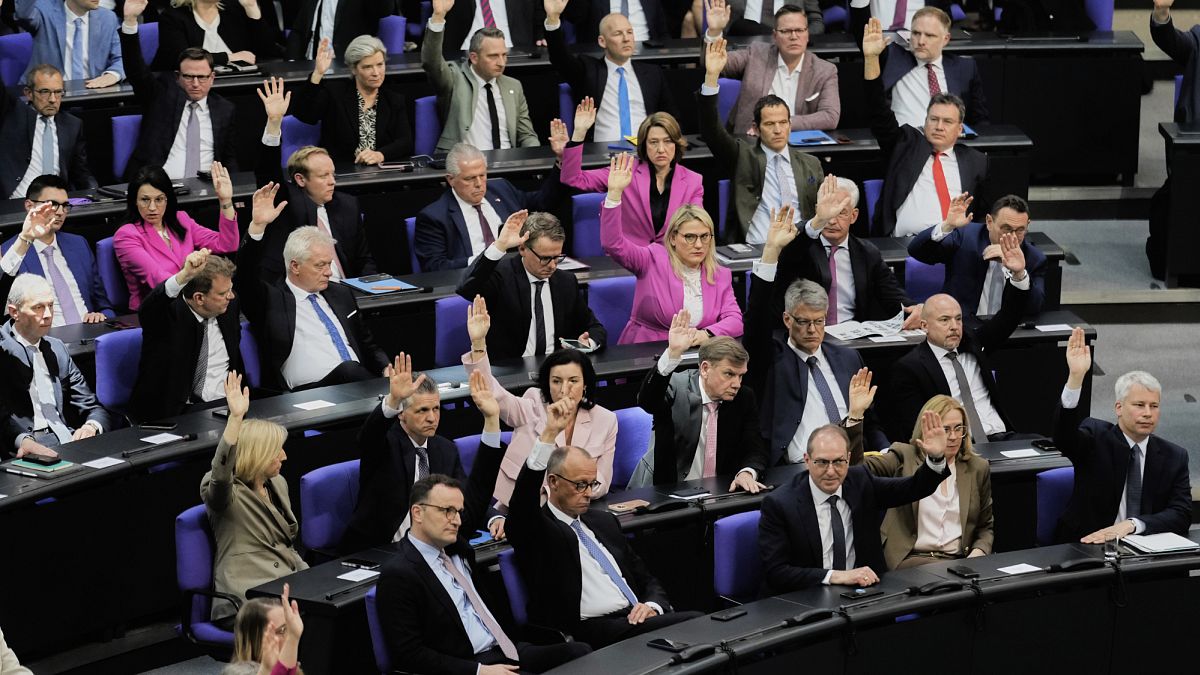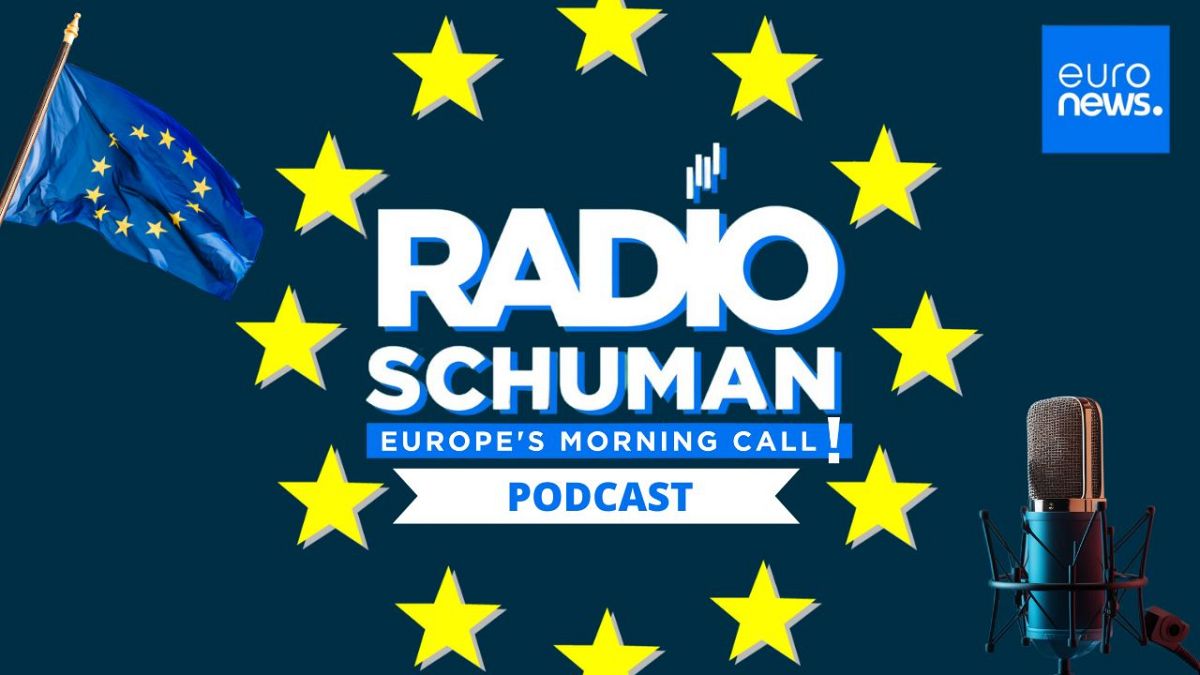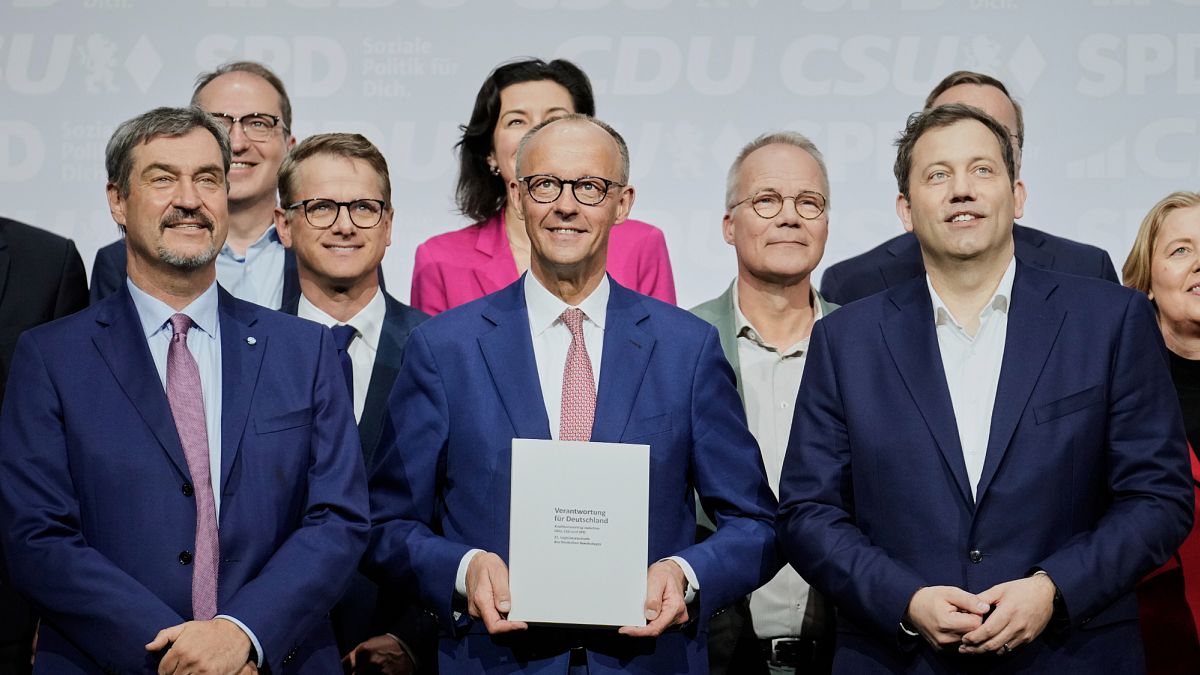What can Trump learn from Europe as he fights for Gen-Z voters?

National Rally and AfD, once unacceptable to young voters, have managed to reach them and win them over with savvy social media strategies.
It’s been dubbed “the year of the election”. Throughout 2024, democracies across the west have seen millions of voters cast votes already this year — and on 5 November, the world’s oldest continuously operating democracy, the US, will elect a president, the entire House of Representatives and one-third of its Senate.
With many of the same issues attracting the focus of politicians, parties and voters on both sides of the Atlantic, Euronews asks: What can Europe’s myriad elections in 2024 tell us about the upcoming vote in the US?
This past April, as the European Parliament elections were ramping up, Germany’s 66-year-old chancellor, Olaf Scholz, created a TikTok account.
After years of ignoring the fast-growing Chinese social media platform, the German leader joined TikTok in hopes of gaining support with Germany’s younger voters.
“Go where the citizens are and inform them there,” was the rationale laid out by government spokesperson Steffen Hebestreit.
TikTok is the largest online platform for members of now-voting eligible Generation Z. More than 70% of “Zoomers” worldwide use TikTok, far outstripping the general population.
And the platform has been key to the growth of various far-right parties throughout Europe, including Germany’s Alternative for Germany (AfD) and France’s National Rally (RN).
Keen to improve its image with Germany’s youth, AfD has worked tirelessly to become TikTok’s most active political party in Germany, and controversial party leaders including Maximilian Krah have gained large followings over the past year by posting short videos with a large reach.
With June’s EU vote and a series of German state elections now in the rearview mirror, it appears the strategy worked. In June, AfD grew its share with voters 16-29 years old by 11 points compared to the 2019 EU elections — and in September’s regional election in Thuringia, 38% of voters under 25 years of age voted for AfD, more than double the result of the age group’s second choice of party, Die Linke.
In France, meanwhile, a similar rightward trend among young voters is coming into view.
Marine Le Pen’s young protégé, RN leader Jordan Bardella, is another keen user of social media, and his profile was crucial to RN’s growth in 2024.
With 2 million TikTok followers, Bardella is the third most followed French politician on the platform, trailing only President Emmanuel Macron (5 million) and left-wing firebrand Jean-Luc Mélenchon (2.6 million). But the devil is in the detail, and Bardella’s account has more likes and higher engagement rates than his competitors.
Once viewed as too extreme to govern, RN has benefited from a combination of strategic rebranding as well as the age-old factor of time, and its relative successes in 2024 have clearly been bolstered by a surge in support among French youth.
Despite the party’s controversial history and connections to past fascist movements, many young French voters see RN as an alternative to the status quo of Macron’s liberal coalition or the smattering of left-wing parties that comprised the National Popular Front in this summer’s parliamentary vote.
In June’s EU elections, RN achieved a historic percentage of the youth vote en route to their largest-ever allotment of MEPs. Exit polls showed that the far-right party gobbled up 32% of the under-35-year-old vote, while Macron’s coalition achieved just 5% of it. In the subsequent snap election for French parliament, RN found similar success with voters under 35.
Like AfD, RN achieved this success partially by tailoring social media messaging for younger audiences, a strategy that allowed them to structure their ideological messages in a way that connected to younger voters.
In essence, TikTok became a tool to shape existing narratives into a message that connected with the issues plaguing many of Europe’s young people.
Issues driving the vote
One of AfD’s most common campaign themes over the past year has been “peace in Europe”. Critics in Germany and across Europe have lambasted the German party for being pro-Russian.
Yet AfD’s leaders have successfully used TikTok and other social media platforms to argue that young people’s lives are being made harder because Germany’s government and establishment parties are focusing instead on non-German issues such as Russia’s full-scale invasion of Ukraine.
European-wide issues, such as the housing crisis, stagnant wages and poor job opportunities, were wrapped into a singular message that if peace in Europe can only be achieved, then young voters’ immediate problems could be fixed.
The same tactic was used to campaign on migration, which both AfD and RN connected to the many obstacles in young voters’ lives.
In 2019, climate change and environmental concerns drove many young European voters to support green and liberal parties across the EU. But while a study by the Institute for Global Affairs shows that environmental issues remain a top priority for younger voters, the lines are less clear than they were five years ago.
Today, “poor decision-making by the political elite” has risen to become younger voters’ second-biggest concern — followed by migration.
This shift has presented a unique opportunity for Europe’s right, signalling that younger voters have become increasingly diverse in their priorities.
It’s not just France and Germany showing this trend. In the Netherlands, Greet Wilders and his Freedom Party increased the youth vote by 7% in their election win last year.
In Portugal, far-right party Chega jumped to a comfortable third-place position in Lisbon’s Parliament, partially riding a social media-driven campaign geared towards younger voters upset with the establishment.
Far-right parties from Spain to Finland have also enjoyed greater-than-normal levels of support from young voters.
With establishment centrist or left-wing parties still in control in many capitals across Europe, including Brussels, the shift is unlikely to stop. If confidence continues to wane in Europe’s governments, far-right parties will continue to present an alternative for young voters seeking a change to the status quo.
Youth vote trending right
Citizens of the US face many of the same key issues as their counterparts in Europe, with housing costs, stagnant pay and inflation have all created major issues for younger voters. And US strategists on both sides of the aisle have recognised this.
For the last 60 years, the US youth vote has reliably gone to the Democrats. In many elections, Democratic campaigns have depended on driving up the under-35 demographic to win narrow outcomes.
That much was true in 2020, Joe Biden won the youth vote by a margin of 61-36 — an 11-point improvement on Hillary Clinton’s result in 2016. Given the narrowness of the 2020 result, high youth turnout for Biden arguably won him the election.
This year looked more difficult. Before the president dropped out of the race in July, a smattering of polls conducted between May and July showed Biden still leading Trump among the youngest voters, but only by small margins; one PBS poll from June even showed Trump ahead of Biden when including other candidates, such as RFK Jr (now no longer running) and the Green Party’s Jill Stein.
The numbers were jarring for the Democrats, and may have played a role in convincing the president to step down from his re-election bid.
Since accepting the Democratic nomination in the summer, Kamala Harris has made strides in recapturing young voters. A new CNBC poll shows that Harris is back to leading with voters under 34 by a 20% margin, 60%-40% — numbers more in line with the 2020 result.
However, data for young voters tends to be more variable and less reliably predictive than with other demographics, and that has thrown up conflicting polling results.
According to a September SurveyUSA poll, Trump held a four-point advantage with Gen-Z voters, beating Harris 50-46. And in the key swing state of Arizona, where Biden won an ultra-narrow victory in 2020, Harris is struggling with the youth demographic.
A recent New York Times/Siena College poll found her leading Trump by just 9% with voters under 30 in the state — and the same poll put Trump ahead by 5 points in the state as a whole.
The tightening youth vote shows an ongoing trend reminiscent of Europe. As young European men lead the shift right, the trend is even more noticeable in the US.
While the US’ young women remain strongly liberal, driven largely by the crucial issue of abortion rights, young men are growing more conservative. In 2022’s midterm elections, Gen-Z women voted Democratic at a 72% rate. In that same election cycle, Gen-Z men split almost evenly, with 52% voting for the Democrats.
The Trump campaign sees the trend. In recent months, the former President has made guest appearances on an array of podcasts with audiences comprised largely of young men.
This week, it was announced that Trump would be a guest on Joe Rogan’s podcast. Rogan is a culturally important figure, especially for many young men, with over 11 million listeners per episode.
Still, the path to winning “Zoomers” remains an uphill battle for the Republicans. Unlike Europe’s left, Harris and the Democrats lead the battle on social media, especially TikTok.
Despite major investments made by Trump’s campaign, the former president remains less popular there: negative-Trump posts on the platform outweigh negative-Harris posts by a 2-to-1 margin, according to Pew Research, while 55% of US TikTok users identify as Democrats and just 39% as Republicans.
However, in an election that could come down to just a few thousand voters in a handful of states, every vote matters. And if the trend we saw in Europe continues in the US, Trump may only need to peel 5-15% of Gen-Z voters away from the left to shift the outcome in his favour.
This is part two of a two-part series where Euronews explores the similarities between Europe and America’s 2024 elections. Read the first part on how European elections highlighted voter dissatisfaction and a shift towards anti-establishment parties, a trend that could influence the US elections, here.
Source: Euro News















